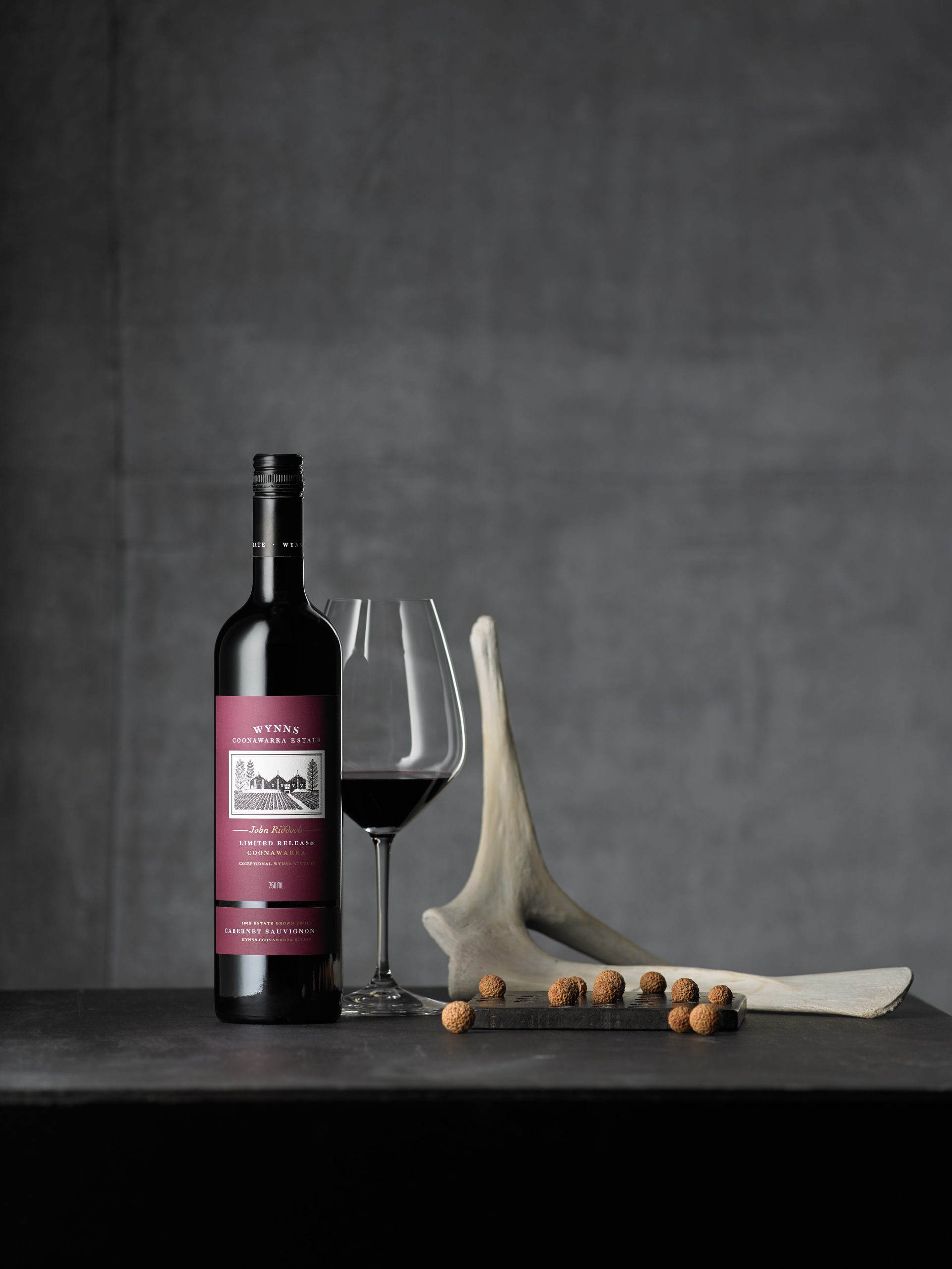Need Christmas inspiration for the wine connoisseur in your life?
Short of seasonal gift ideas? Money no object? Bordeaux can help with that. In traditional ‘12 days of Christmas’ style, our Bordeaux correspondent Colin Hay chooses from amongst Bordeaux’s more exclusive new releases a dozen gift suggestions for the ‘true-love’ (affluent or not so affluent) short of seasonal vinous inspiration …
On the first day of Christmas my true-live (might have) sent to me….
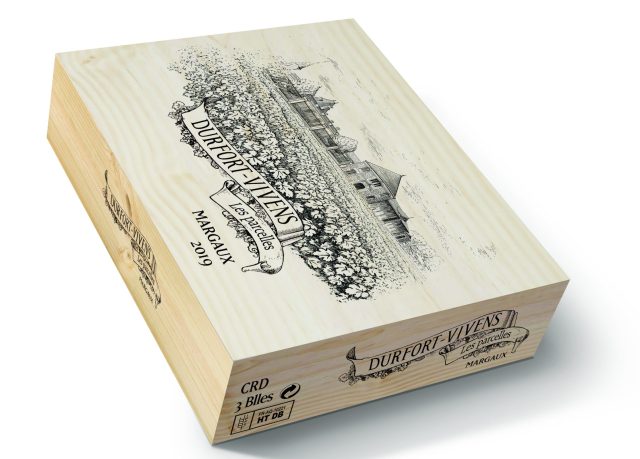
The wine: Château Durfort Vivens collection case “Les Parcellaires”.
Format: A rather beautiful thee-bottle case containing all three of the new parcellaire wines of Durfort-Vivens in their first vintage (2019).
Unique selling point: A wonderful potential horizontal tasting of Durfort-Vivens’ highly accessible and high quality parcel expressions. Also available in a yet more stylish 4-bottle case format with a bottle of the grand vin itself.
Yours for: A comparative snip at €120 (duty and tax inclusive) for the 3-bottle case or €200 for the 4-bottle case.
- Durfort Vivens Les Plantes 2019 (Margaux; 88% Cabernet Sauvignon; 10% Merlot; 2% Cabernet Franc; from the young vines of the property – and from parcels throughout the appellation in Margaux, Cantenac, Arsac and Soussans; now in bottle for a year; tasted three times over the last year; 13% alcohol). Baby Durfort-Vivens – and very lovely with it, especially in its aromatic complexity. This is largely Cabernet Sauvignon and that accentuates the sense of precision and purity. Nicely limpid in the glass. Fresh, bright, lightly-textured, with that signature Durfort-Vivens purity and freshness, a little hint of cedar (which builds with air and is more present in the most recently tasted sample), cassis and blackberry, with a little hint of espresso. Nice pick-up on the attack, soft tannins, glistening crystalline fruit; lithe and sinuously textured. Not massively concentrated and with a very open-texture, but that helps one appreciate the details of the mid-palate. There is also a lovely sapidity, that comes in and pinches the wine just before the plume on the finish. Very good for what it is even if it lacks a little density (it is only that stops me from rating this higher). This is for drinking young and exactly what a decanter is made for. A fabulous advert both for the quality of the terroir and for allowing it to be expressed in these young vines in their own bottling. 90+.
- Durfort Vivens Le Hameau 2019 (Margaux; 53% Cabernet Sauvignon; 47% Merlot; aged for 16 months in clay amphorae and oak, 15% new; from around 10 hectares in Cantenac on deep gravel slopes with an east-west exposition; 13.5% alcohol). A step up from Les Plantes tasted just before and with greater natural sweetness. This has a very beautiful and complex Margaux nose – dark and rich, floral, cool and inviting. Black cherries, brambles, wild herbs – thyme and rosemary; a hint of graphite but not as much cedar as with Le Plateau. Lovely texture, once again, this is a little more opulent and seductive; more silk than cashmere, more broad-shouldered in personality; and softer until the grip of the tannins which comes later and is very impressive, producing a second wave. This is long and flowing on this finish – touching the top of the palate most but also the bottom. The plenitude is impressive. Very stylish and very much in the spirit of the new Durfort-Vivens. The most elegant of the three. 93.
- Durfort Vivens Le Plateau 2019 (Margaux; 65% Cabernet Sauvignon; 35% Merlot; aged for 16 months in clay amphorae and oak, 10% new; from the plateau le marin at Soussans on sand and deep gravel beds; 13.5% alcohol). Classic and classy. The older vine character is immediately in evidence; this is a little denser and richer. Cassis and cedar, graphite, with a touch of sesame from the ripe pips, a little hint of spice; little touches of herbal garnish like a well-dressed plate; very floral – hyacinth and peony. There’s a little cracked black pepper too. Super-soft on the entry; cashmere tannins at first, but then the grain appears and grips and shapes the fruit; there is lovely softness but also a fascinating evolution over the palate. Long and with well-sustained breadth on the finish; the sapidity of Le Hameau is less obvious, but the same freshness is there, just more evenly distributed across the palate. There is lovely delineation in the mid-palate due to that. The most substantial of the three. 93.
On the second day of Christmas…

The wine: Château Phélan-Ségur collection case “Les Passionnés”.
Format: A vertical tasting in a case, with one bottle each of Phélan-Ségur 2013, 2014, 2015, 2016, 2017 and 2018.
Unique selling point: A limited edition mixed case and a vertical tasting in its own right – a chance to follow Phelan-Segur’s progression over the last few vintages including the fabulous trio 2014-2015-2016 and the superb 2018. An excellent introduction to each of these vintages from this ever-reliable and up-and-coming estate which invariably produces wines of classed growth quality at less than classed growth prices.
Yours for: Still not really breaking the bank at €285 (duty and tax inclusive) from Phélan-Ségur’s online shop (https://boutique.phelansegur.com/fr/les-coffrets-vin/24-les-passionnes.html#nogo).
On the third day of Christmas…
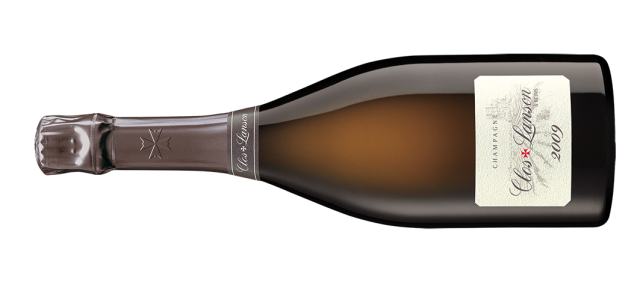
The wine: Clos Lanson 2009.
Format: A single bottle in a rather beautiful individual presentation wooden case.
Unique selling point: This might seem like cheating – champagne in a Bordeaux Christmas? On the other hand, what’s Christmas without great Champagne? … And this is, of course, one of three single-vineyard Champagnes to have been released on la place de Bordeaux. Like the others (Clos des Goisses and Château d’Avize), it’s fabulous.
Yours for: c. £140-145 before duty and VAT from a variety of wine merchants in the UK and continental Europe.
- Clos Lanson 2009 (100% Chardonnay; from Lanson’s historic walled vineyard within the city of Reims itself and with a direct view of the Cathedral; a wonderful pure calcaire terroir gives this natural freshness; no malolactic fermentation to retain the freshness; this has aged 12 years on the lees in the cellar directly below the vineyard; disgorged May 2022; 3g/l dosage; 7454 individually-numbered bottles produced, with around 5000 released on la place; 12.5% alcohol; tasted three times with consistent notes, most recently with Enguerrand Baijot and Hervé Dantan in Lanson’s chai beneath the vines themselves just over two weeks before its release on la place). A truly fabulous and singular wine that was immensely promising when I first tasted it just 2 months after its disgorgement, but that has improved each time I have tasted it as it has relaxed and revealed more of its identity. Bright, energetic and radiantly expressively on the nose, with a fabulously complex aromatic profile, both fresh and rich at the same time. There are fifty shades of citrus here – the most striking being tangerine zest and oil; pear, green apple skin; a touch of spice that builds in the glass; confit citrus notes, a little pink grapefruit skin and more exotic notes of pineapple and passionflower. There is jasmine and honeysuckle too, toasted brioche, almond and frangipane and a gentle hint of white truffle. Brilliantly tense and pure in this warm and sunny vintage, the pure chalk helping this to retain the signature poise and freshness of its terroir. As with the other vintages tasted, there is a palpable sense of structural evolution in the mouth, as the natural acidity and saline minerality of the terroir draws the wine out over the palate, reining in the rich generosity of the attack. A gloriously velvety mouthfeel too. Quite superb. 98.
On the fourth day of Christmas…
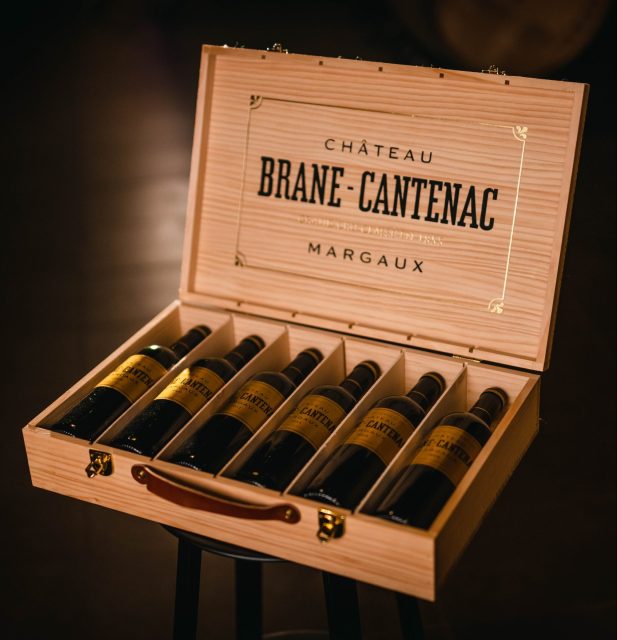
The wine: Château Brane Cantenac.
Format: A six-bottle mixed case in a stylish presentation case with a leather handle.
Unique selling point: It’s a now familiar format – a six bottle mixed case in a beautiful presentation case (here with a leather handle) – but with a subtle difference, in that you get 2 bottles of each of three top vintages (the 2009, 2011 and 2019). One each for Christmas and one for later …
Yours for: OK, your true-love either needs to be more affluent than mine (or to love you very much!) … €730 tax and duty inclusive from Lavinia in Paris.
- Brane Cantenac 2019 (70% Cabernet Sauvignon; 26% Merlot; 2% Cabernet Franc; 1% Petit Verdot; 1% Carmenere; alcohol 14.1%). Tasted three times: first from a sample supplied by the chateau, then at the UGC in Paris and finally at the chateau itself – over a period of a full month. Continuing a splendid run of recent form, this is certainly on a par with the 2018 (which I also loved) and very close in quality to the exceptional 2016. But though authentic to its distinct terroir (the first wine this year comes exclusively from the croupe de Brane itself) and to its appellation, it is very different from both of these wines. As always with Brane, one is struck first by the gorgeous nose – blackberries, with walnuts and lavender and a lovely, energetic, fresh and vivid fruitiness. It does not yet have as much stuffing or concentration as the 2016. But what it does have are the softest and gentlest of tannins and, crucially, enough energy, freshness and acidity to cover the elevated alcohol that is one of the signatures of this vintage. The texture is sublime, the tannins fantastically well-managed (with no pumping over and the use of the innovative R’Pulse system). With a little more time to breathe (the advantage of samples kindly supplied by the Chateau) the wine really starts to blossom, gaining in mid-palate depth and complexity, with notes of griottes and freshly ground Arabica coffee (with its points of acidity). Almost imperceptibly powerful, very gentle and svelte with a lovely long, racy finish. Very pure, almost crystalline – the Pichon Lalande of Margaux (as I have said before). 97.
- Brane-Cantenac 2011 (Margaux; 56.5% Cabernet Sauvignon; 37% Merlot; 6% Cabernet Franc; 0.5% Carmemere). Tasted last in 2020. Very much of the appellation and of the vintage – not difficult, I suspect, to pick this as 2011. A little harsher, a little courser, a little bigger and a little more severe. The same signature but here with dried flowers and dry fruit. Long and quite tannic still – indeed, elongated on the finish by the slightly raspy tannins of the vintage. Needs food. A very different expression of Brane but still very true to its signature and terroir. 93.
- Brane-Cantenac 2009 (Margaux 53% Cabernet Sauvignon; 40% Merlot; 7% Cabernet Franc). Tasted last in 2020. Almost the antithesis of 2010. Open, really flattering and enticing – already in full voice. Exotic. Plump. Exuberant. Energetic. Flamboyant. Generous. And strikingly complex too. This has a lovely acidity. Lithe and limpid in the glass with those dried lavender notes of Brane. Heather. Incense. Mocha. An undoubted highlight of the tasting and the vintage. Richly deserving of its reputation. This sings every time I taste it. 96.
On the fifth day of Christmas…
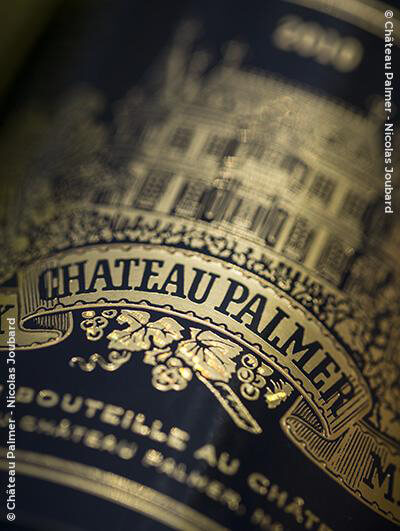
The wine: Château Palmer (new late release direct from the Château).
Format: Available as a single bottle in individual wooden case or in traditional wooden cases of 6 or 12 bottles.
Unique selling point: The wine has perfect provenance, coming directly from the Chateau’s own cellars and is now (just about) ready to be appreciated.
Yours for: Around £200 per bottle (pre-tax and duty), so I make that £1200 for a case of six.
- Palmer 2012 (Margaux; 48% Merlot; 46% Cabernet Sauvignon; 6% Petit Verdot; a final yield of 28 hl/ha; aged in oak, 60% of which was new). A gloriously succulent wine in the context of this and any vintage – very expressive of Palmer’s identity and no doubt all the more so for being the first vintage with organic certification (and much of it farmed biodynamically). Sumptuous dark berry and stone fruit and the silkiest of tannins, with great density and concentration for the vintage. Accessible already and wine loads of energy and a lifted freshness that lingers long on the palate. Sleek, beguiling, stylish and the heart and soul of the appellation. 96.
On the sixth day of Christmas…
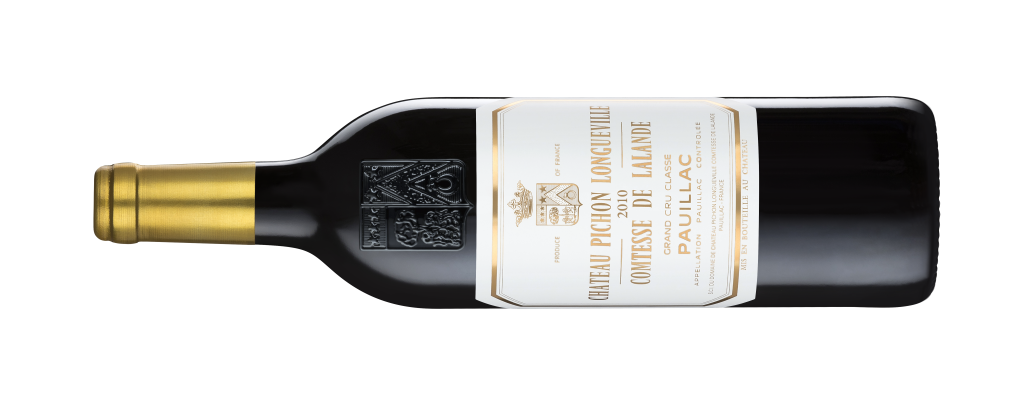
The wine: Château Pichon Comtesse de Lalande (a first new late release direct from the Château).
Format: Available as a single bottle or in traditional wooden cases of 6 or 12 bottles.
Unique selling point: As for Palmer 2012, the wine has perfect provenance, coming directly from the Chateau’s own cellars and is starting to enter its (extraordinarily long) drinking window. This has 100 points from Jane Anson too.
Yours for: Like Palmer 2012, again, around £200 per bottle (pre-tax and duty) – so that makes £1200 for a case of six.
Tasting note: Sadly I’ve not tasted this recently (a subtle hint to my true-love perhaps?).
On the seventh day of Christmas…
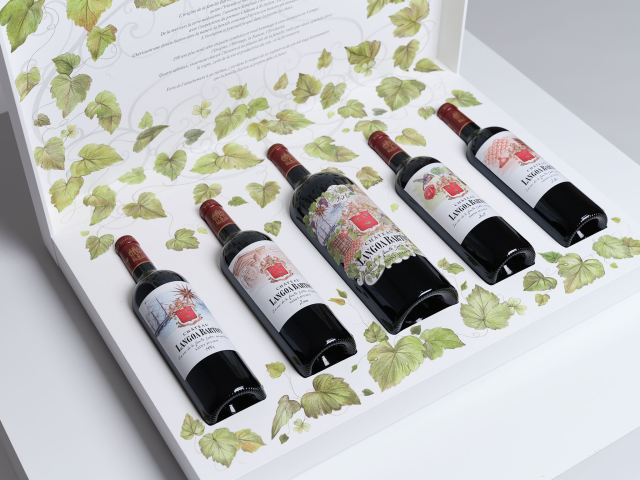
The wine: Château Langoa Barton
Partner Content
Format: 200th anniversary special collector’s case containing 1 bottle each of the 1994, the 2000, the 2009 and the 2016 (each with a special label) and a magnum of the 2021 (again, with a specially designed label).
Unique selling point: A unique item that any and all lovers of Langoa Barton will want to have in their collection. The only slight hitch here is that your loved one will have nothing yet to wrap – as these cases will only be released once the 2021 vintage is in bottle (in October 2023).
Yours for: £640 (or €690 in the EU) duty and tax paid, from Millesima online.
Tasting note: Sadly, I’ve not tasted any of the older vintages recently, though I loved the 2016 en primeur and I have very fond memories of a bottle of the 2000 tasted with friends a few years ago.
- Langoa-Barton 2021 (St Julien; 61% Cabernet Sauvignon; 36% Merlot; 3% Cabernet Franc; 13% alcohol; tasted en primeur at the UGCB press tasting and at Lagrange with very similar notes). Another wine that is very true to its own style here. Nutty, with a pleasing ripe natural sweetness to the fruit; a little hint of the oak and a trace (but only that) of vanilla and of grated dark chocolate, almonds and frangipane, alongside the dark plump black cherry and bramble fruit – mulberries too. There is good depth and density to the fruit, which is very pure, though I find the mid-palate a little less defined and precise than with the leading handful of wines of the appellation. My second tasting suggests that’s just a little harsh (and I revise my score up a notch). A great mouthful – with sapid gobbets of fresh fruit. Full and rich, bright and tense. Promising in the context of any vintage and very fine indeed in the context of this one. 93-95.
On the eighth day of Christmas…
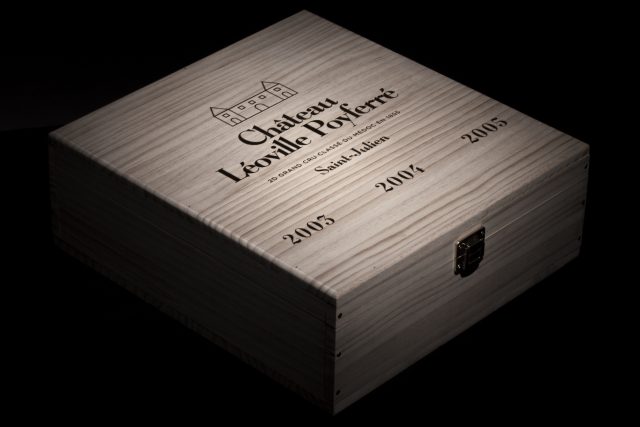
The wine: Château Léoville Poyferré
Format: a three-magnum special collection case containing one each of the 2003, 2004 and 2005 trio.
Unique selling point: perfect provenance again and another unique item, rare too in containing older vintages that are beginning to enter their prime and in a larger format too. The case itself contains a quote from Antoine de Saint-Exupéry, carved on the inside of the lid, “what is essential is invisible to the eye”. There is plenty here to please both the eye and the palate.
Yours for: €780 (duty and tax inclusive) and available only directly from the property in very limited quantities.
Tasting note: Alas, I’ve not tasted any of these vintages recently. The 2003 is, though, widely regarded as a particular success in the context of a difficult vintage and I have very fond memories of the 2005 served at a lunch at the property almost a decade ago.
On the ninth day of Christmas…
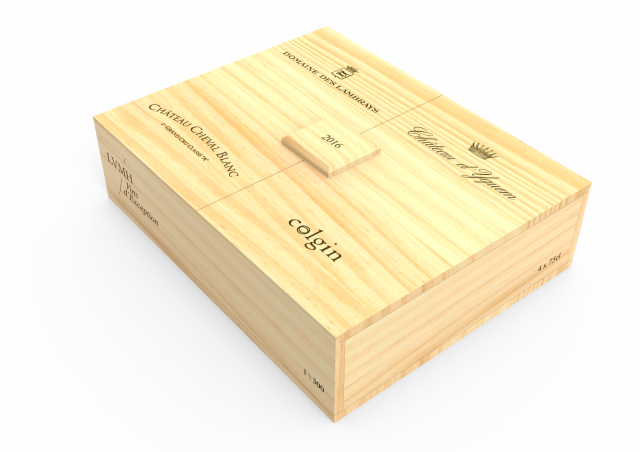
The wine: LVMH vins d’exception selection case
Format: this 2016 vintage collection case contains one bottle each of Cheval Blanc 2016, Yquem 2016, Clos des Lambrays 2016 and Colgin Cellars IX Estate 2016 in wood.
Unique selling point: the sheer quality of the wines on display here and, indeed, the quality of the vintage.
Yours for: … well, the case is not easy to come by and I suspect that if your true love needs to ask the price you might have to be extremely fortunate to find this in your Christmas stocking! (If you can find one, it’ll set you or your true-lack back around £2700 or €3000 tax and duty inclusive).
Tasting note: Yquem and Cheval Blanc were amongst the very best wines of the vintage on the basis of my own en primeur tastings. They are both timeless and close to perfection. I have, alas, not tasted the other two. But you hardly need a tasting note to be convinced of the quality of these rare and exceptional wines from a remarkable vintage.
On the tenth day of Christmas…
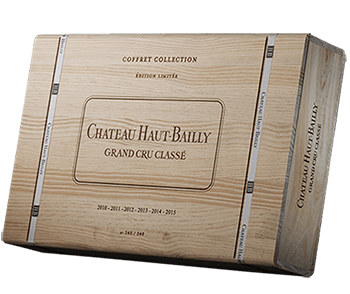
The wine: Château Haut Bailly
Format: another beautiful 6-bottle case containing each of the vintages 2010-2015
Unique selling point: there are some real highlights here (notably, the 2010 and 2015). Each vintage has a single word or single phrase epithet to capture its essence: L’Excellence (2010), L’Empreinte de son terroir (2011), Virtuose (2012), Miraculé (2013), Intensité et Energie (2014), Plénitude (2014).
Yours for: £800 or €875 (duty and tax inclusive) for the case from Millesima.
- Haut Bailly 2010 (62% Cabernet Sauvignon; 36% Merlot; 2% Cabernet Franc). Limpid, glossy, opaque at the core and with little silver sparkles on swirling. Cool. That sense of diving into cold fresh water. Deep and very dark. Sensational and even more profound than the 2009, if a little more austere and serious – very much in the style of a vintage whose character seems to reinforce the minerality of Haut-Bailly’s terroir. Dark fruit; cedar-coated cassis. A gorgeous texture – power enrobed in cashmere. Just wonderful and probably my favourite wine of the tasting, even if it will be better still in a decade’s time. So profound and with the most incredible tannins, which remain almost imperceptibly soft on the palate for at least thirty seconds before beginning to bite and to start to reveal a little of their granular character. Finishes with a touch of grated dark chocolate and black cherries. Wondrous. 97.
- Haut Bailly 2011 (50% Cabernet Sauvignon; 47% Merlot; 3% Cabernet Franc). Similar in appearance, if very different in style, to the 2010 – which is never going to be an easy act to follow. And, in the context of the vintage, impressive and successful. Graphite minerality here in contrast to the 2010’s more cedary character. Very creamy and soft. Fresh with a lovely florality and notes of sous bois and field mushrooms. Cool and lifted. Has the same slight hint of volatile acidity as the 2006 and, also like the 2011, just a little stolid and severe – very much in the character of the vintage. Sappy and fresh with just a hint of dryness on the finish. Authentically of its vintage, if more accessible than most, and with a pronounced ferrous minerality; excellent in its way, but lacking the harmony of more recent vintages. 93.
- Haut Bailly 2012 (60% Cabernet Sauvignon; 40% Merlot). A touch lighter in the glass than the 2011. Beautifully integrated, holistic and seamless nose. Complex and engaging and very characteristic of Haut Bailly – dark damson plum fruit, sloes, wild blueberries, a touch of crème de cassis, heather and lavender, violets and primrose too. Cracked walnuts and a pleasing hints of graphite minerality and a whiff of cigar and a pinch of spice. Lovely crumbly tannins. Soft on the entry and slow to unfurl on the palate. Deceptively powerful, if not having the mid-palate intensity of the really great vintages here. A beautiful restrained expression of the vintage – stylish, elegant and well-balanced. 94.
- Haut Bailly 2013 (64% Cabernet Sauvignon; 34% Merlot; 2% Cabernet Franc). Pink rim; light extract. Looks younger in the glass than it appears on the palate. A vintage for which one has to recalibrate one’s expectations a little – this is never going to be a wine flattered by a vertical tasting. In the flight of wines, it comes across a little flat on the nose and thin on the palate. Impressively soft on the entry for the vintage, but still quite angular in comparison to either the 2012 or the 2014. Very herbal on the nose – dried thyme and rosemary are more evident than the red cherry fruit; hints of spice-box and oak, fruit cake and hoisin. A little hollow in the mid-palate, this finishes quite abruptly. It is quite an achievement to have made a wine this good and with this much of Haut Bailly’s terroir typicity to it; but there is no mistaking the vintage and the limitations of the vintage. A touch dry on the finish. This would fare very well in a horizontal tasting; but it is very easy to pick as 2013 in a vertical tasting. 92.
- Haut Bailly 2014 (66% Cabernet Sauvigon; 34% Merlot). A little early bronzing on the rim; moderate extraction; garnet core. Lovely classic cedary nose, rather like the 2012, only more so! But a little closed on the palate. A touch of spice – star anise, Chinese five spice, cinnamon, nutmeg and crushed fennel seeds. Plums, damsons, quite spicy – but this lacks a little the mid-palate concentration and delineation of the best recent vintages. The tannins are just a little powdery and drying on the finish too. I have liked this wine more in the past. It will be interesting to re-taste it in a couple of years. 94.
- Haut Bailly 2015 (60% Cabernet Sauvignon; 36% Merlot; 4% Petit Verdot). The first vintage in which the Petit Verdot features in the blend. Deep and dark-hued but actually relatively lightly extracted for the vintage; pink-purple rim; very youthful. Young on the nose too. Brambles with a hint of crème de cassis. All spice and fennel seeds; fresh, if quite firm at this stage – rather classical. More obviously powerful and, in a sense, less restrained and introvert than the other grand vintages. But still with lots more to come. Soft and silky tannins; creamy; and quite floral too. A lovely combination of violets, tobacco leaf, graphite, cracked black pepper and that saline-ferrous minerality. A vin de garde with exceptional aging potential. This will need patience for its full glories to be revealed. 97.
On the eleventh day of Christmas…
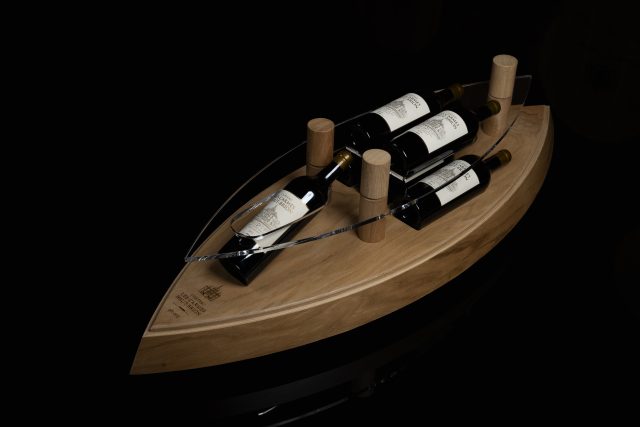
The wine: Château Les Carmes Haut-Brion (the ‘ELEMENTS’ project).
Format: Three rare, highly original and very covetable hand-crafted wooden cases containing, respectively, 6, 3 or 2 vintages of Château Les Carmes Haut-Brion. Elements VI contains 6 bottles from 2013 to 2018 inclusive; Elements III contains 3 magnums of 2017, 2018 and 2019; and Element II contains 2 double-magnums of 2018 and 2019.
Unique selling point: The wines here are stunning, increasingly so. And so is the packaging, designed in the image of the new, ultra-sleek, boat-shaped cellar (itself designed by Philippe Starck and Luc Arsène-Henry and opened in 2016).
Yours for: Prices start at €3900 for Elements VI and rise to €5900 for Elements II. These limited edition cases are available exclusively and directly from seven negociants: The Wine Merchant, CVBG, Descaves, Ulysse-Cazabonne, Vins & Passions, Duclot and Ginestet.
- Carmes Haut-Brion 2019 (Pessac-Léognan; 70% whole bunch fermentation; aged in 90% new oak and 10% amphora; 50% Cabernet Franc; 34% Cabernet Sauvignon; 16% Merlot; 13.5% alcohol; pH 3.59; from a vertical tasting at the property in February 2022). A shade less dark and a shade less dense than the 2018. Again, this is ultra-floral – more pink than purple. Redder fruit – raspberry, even redcurrant, blackcurrant too. Very wild and croquant. That very ‘2019-thing’ with cedar already rolling up alongside the more structural graphite notes. Texturally incredible. Even in a line-up of translucent and diaphanous wines this is a shock – as it’s so clear, expressive, luminous and wonderful. The fruit is as if picked today – plump and with the bite of tight, ripe skins. A lovely raison skin finish too with that little bite, almost prickle of the finest tannins. Gossamer. Gorgeous. 98.
- Carmes Haut-Brion 2018 (55% whole bunch fermentation; 37% Cabernet Franc; 34% Cabernet Sauvignon; 29% Merlot; 13.5% alcohol; pH 3.64; from a vertical tasting at the property in February 2022). Dark jet black core. Highly concentrated. Opaque. Full moon on the lake at the darkest point of the night. Purple flowers – very intense. Parfumier’s essences of lavender and rosemary, violets too. Dark chocolate; mocha. Cinnamon. Very 2018. Sublimely svelte. Black cherry. A heavy velvet curtain of intensely dark berry and black cherry and blueberry fruit. The biggest of the wines on display in the entire vertical. But so nice to have a 2018 at 13.5% with all the concentration and density but ‘normal’ alcohol. Unique and exceptional in this vintage. Walnut essence. Pure. Full. Massive but so ultra soft. 96+.
On the twelfth day of Christmas…
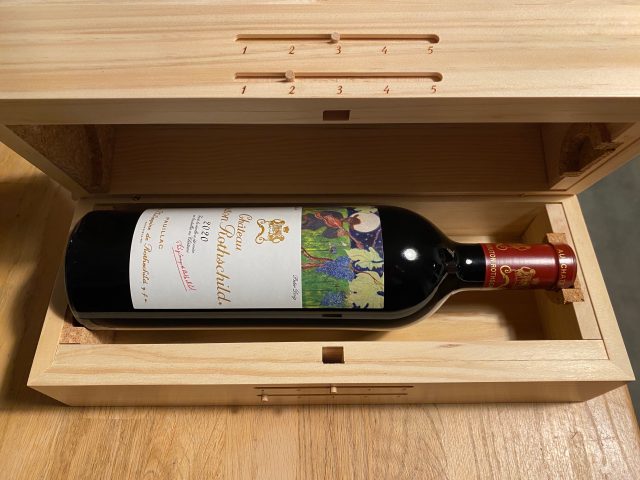
The wine: Château Mouton Rothschild.
Format: a single bottle of Mouton Rothschild in the fabulous 2020 vintage, resplendent in its newly revealed Peter Doig artist label.
Unique selling point: The easiest of these, I suspect, for your true love to wrap – along with the Clos Lanson 2009 (if you’re lucky enough to get both). As the case itself was sent to some journalists, critics and friends of the property (alas, not this one!) before the tightly embargoed unveiling of the label, the case has a complex wooden lock which requires the exact combination code to open. Like the wine, this wonderfully detailed and supremely well-crafted!
Yours for: sadly, it’s not really for sale, as far as I am aware. But it’s still the kind of thing one can covet in a fantasy Christmas top 12. Your true love could, however, purchase a bottle of Mouton 2020 for around £500 exclusive of duty and VAT – and I suspect you wouldn’t quibble if you found that under the Christmas tree.
- Mouton-Rothschild (Pauillac; 84% Cabernet Sauvignon; 13% Merlot; 2% Cabernet Franc; 1% Petit Verdot; pH 3.80; 13.1% alcohol). Tasted en primeur over Zoom with Jean-Emmanuel Danjoy. A simply brilliant Mouton. The nose reveals itself, or those parts of itself that the wines seems to wish to reveal at this stage, in instalments. First spring flowers and a gentle loamy earthiness, then a little hint of beurre noisette and then the fruit starts to arrive, again gradually and in instalments – dark plum cherries, brambles, blackberries, mulberries and sloes, with a little hint of dark chocolate shavings, graphite and cedar (more and more as the wine breathes in the air and softens) and aniseed and grated liquorice root. By this stage we have something utterly sublime, fantastically complicated and entirely harmonious – but also, crucially, staggering bright, fresh and dynamic. The palate is no less extraordinary. This is a wine of amazing clarity and luminosity. It is creamy, rich, plump and layered but it is also diaphanous and sinuous with the fruits seemingly supported on cushions of ultra-fine grained yet almost pixilated and tactile tannins. The iron fist in the velvet glove is perhaps a tired cliché, but it was never appropriate than here. Sumptuous, opulent, elegant and classical yet so exciting fresh and energetic – and with so much still to reveal of itself. 98-100.
Related news
Castel Group leadership coup escalates
For the twelfth day of Christmas...
Zuccardi Valle de Uco: textured, unique and revolutionary wines




